Carl Hartt Fine art photography
Forgotten Souls
I enjoy taking my friends to old cemeteries. I have been trying to scare them since high school.
Enjoy a walk in "my cemetery".
Not without my bear
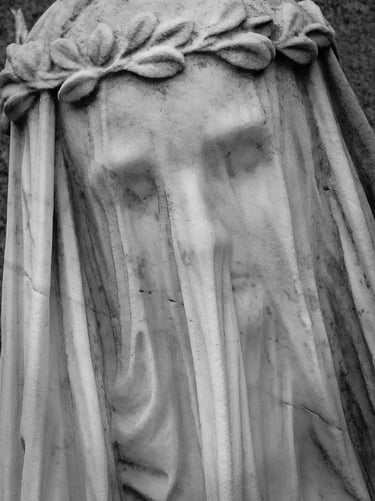

Wrath of God
Forlorn
Dust to Dust
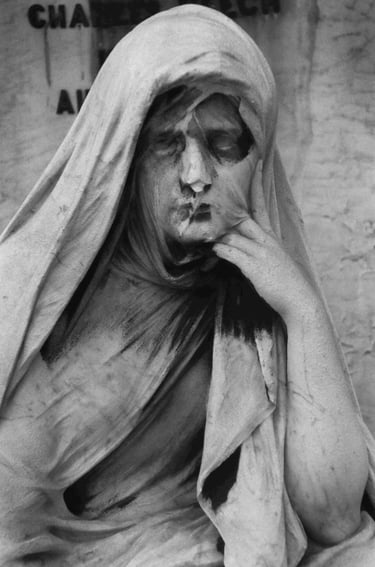

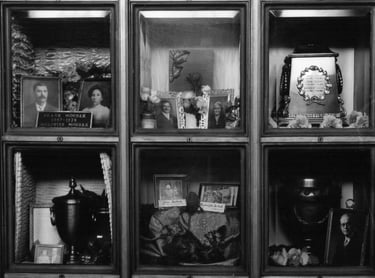

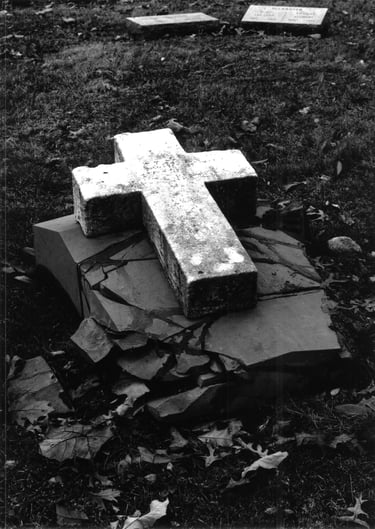

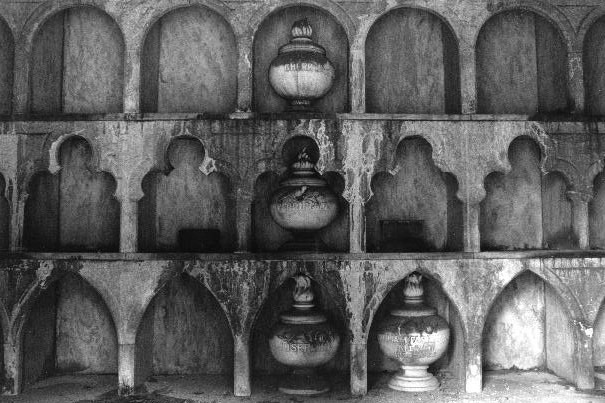

Columbarium
Urns
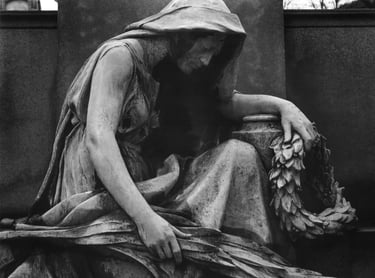

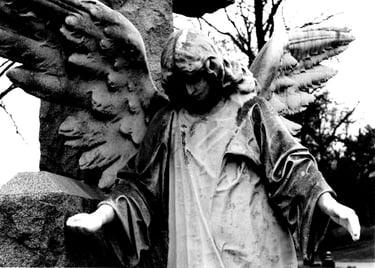

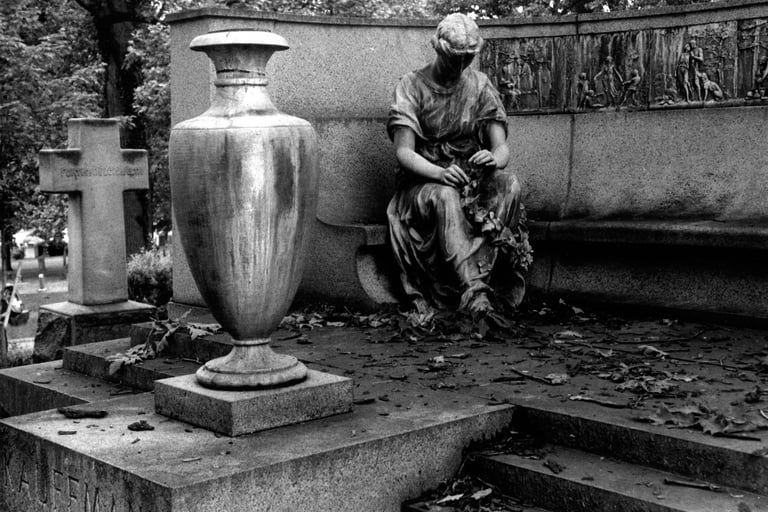

Hands of an Angel
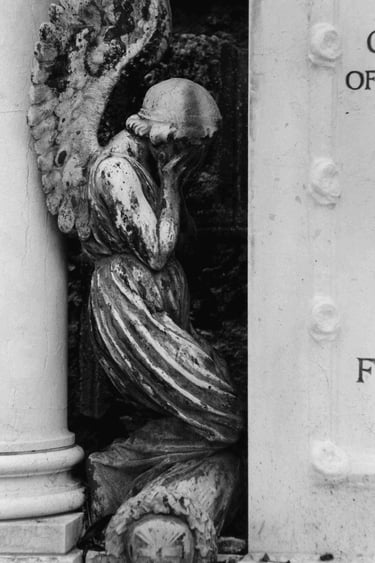

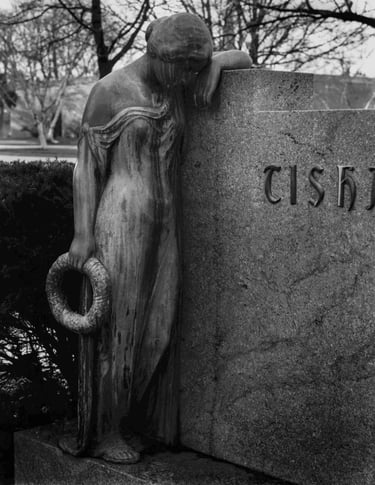

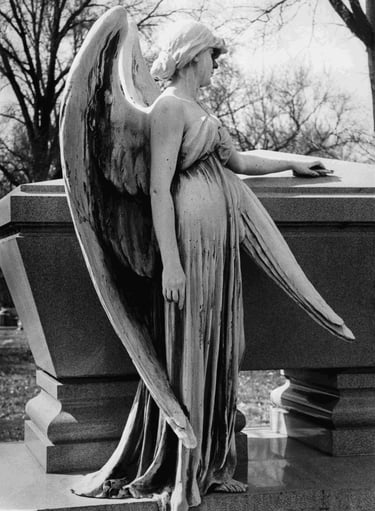

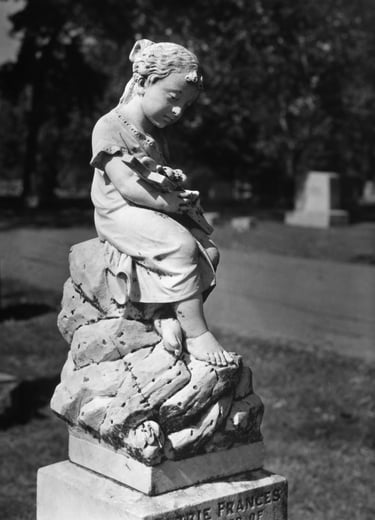

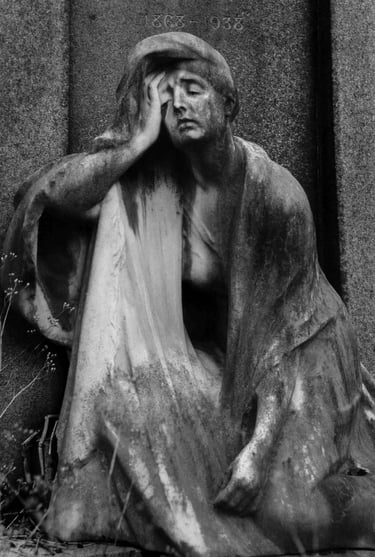



Yearning for a bit more
Mourning Veil
Melancholy
Yearning
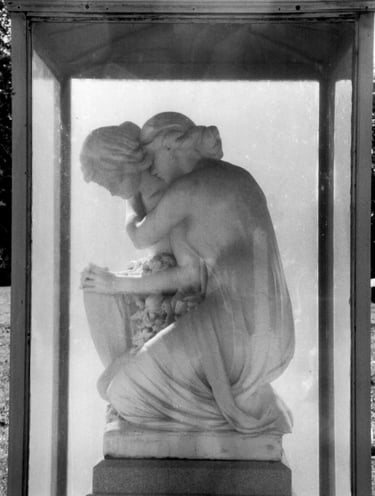

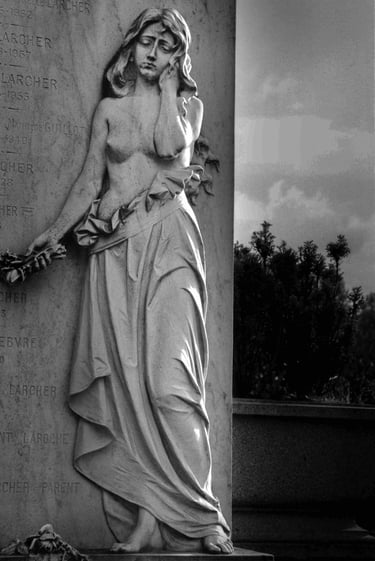

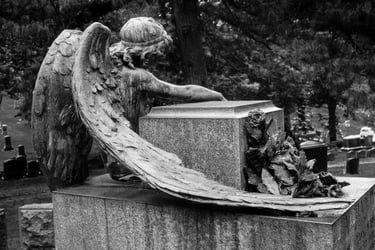

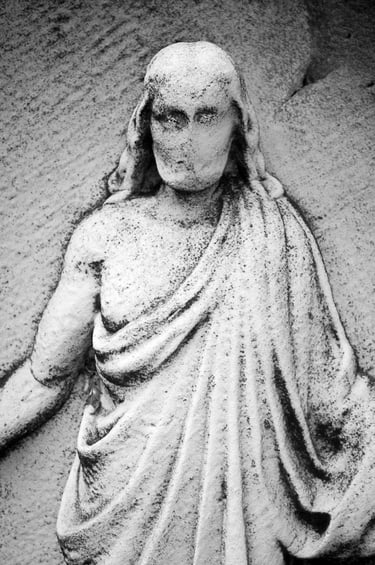

Sisters
Dispair
How long is one alive? Sadly, it could be 6 days or 6 years or 86 years. How long is one dead, or re-stated, how long is one remembered after one dies? A tombstone or memorial is for remembrance, but in 10, 50 or 100 or more years who will still remember? Then again, who cares in 600 years? After those memories are forgotten, often only a tombstone or a memorial is left behind. And then, how long do these tombstones last? How long should they last? I hope to show how tombstones and cemeteries are changing, sometimes forgotten, slowly dying or being destroyed.
150 years ago cemeteries had a serene setting, a place for family reflections and even picnics. They were like an odd park in that they had manicured lawns, flowered gardens, and were filled with both beauty and sorrow. They are also places of children’s nightmares and tears dropped by a mournful, lonely person. They can be sacred or “perpetually” cared for, yet they can also be neglected and forgotten – just like those "inside". Unfortunately, we seem to have forgotten our own mortality and respect for life and death. Today, little remains of what a cemetery once stood for, and the future seems to be only of sorrow.
The art found in cemeteries is changing too – it is dying. There are two fundamental reasons. The first is that the grand memorials and the marble mourning maidens are slowly disappearing. The soft marble sculptures of yesterday are slowly melting away due to acid rain, cracked from ice, strangled by weeds and trees, or broken by vandals. The stones stain and weather. Sometimes they die gracefully and slowly, but surely. They too become forgotten, no longer remembered.
The second issue is that funeral art is dying. Tombstones prior to 1800 were simple, like most of today. Tombstone sculpture, or sceptyrla, is rather Victorian. To celebrate grand accomplishments in the late 1800’s memorials were erected for the beloved. Today, grand memorials are seldom erected, marble angels and mourning ladies rarely carved, cherubs and baby lambs no longer desired. Instead, we get row after row of uniform blocks of granite, much like the boring, cookie-cutter suburban homes they once lived in. In addition, more people are choosing cremation.
Most of the photographs purposely do not have titles. If they were to have a title, what should it be? The name of the deceased - would that provide meaning? Would a city or the cemetery name? What would that provide? What about my own (poetic) title? How would it bias you? I believe that not having individual titles bodes well for the Forgotten Souls paradigm. Therefore, quietly scroll through this “cemetery” of dying tombstones. Admire the withering beauty of the sculpture, and of death. Then ask yourself quietly, what will your grave look like … forgotten in 100 years.
These photographs are from a mix of 35mm, 120 roll, and 4x5 inch film.
My hope is to turn these and many other images into a book. Stay tuned.
Carl Hartt
Capturing life through fine art photography.
Fine Art Photography
carlharttphotography@gmail.com
© 2025. All rights reserved.